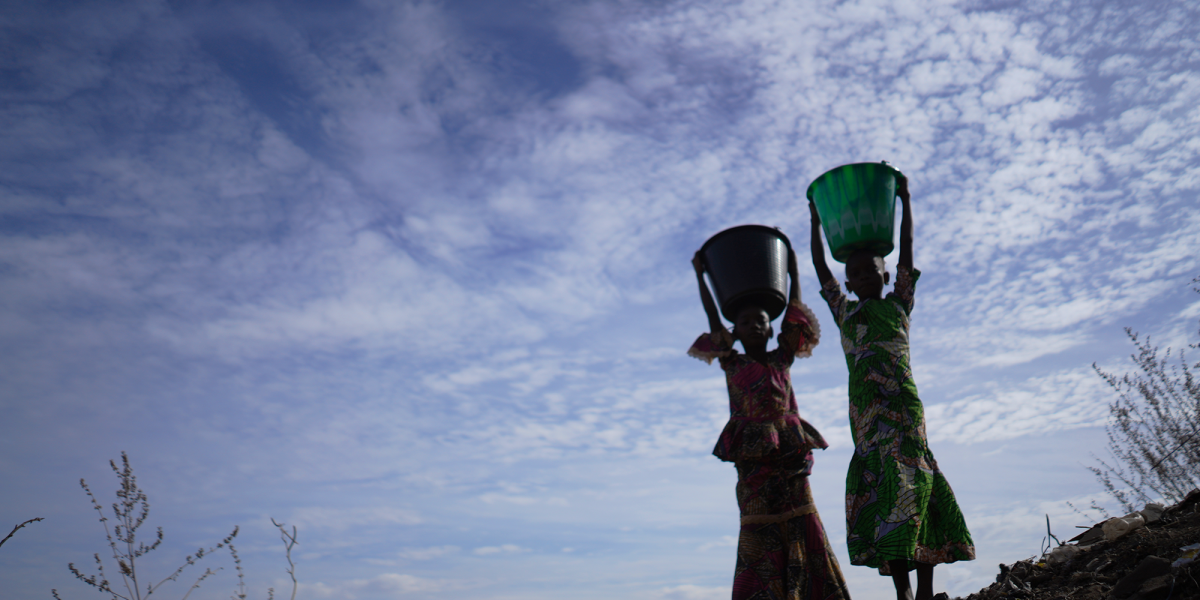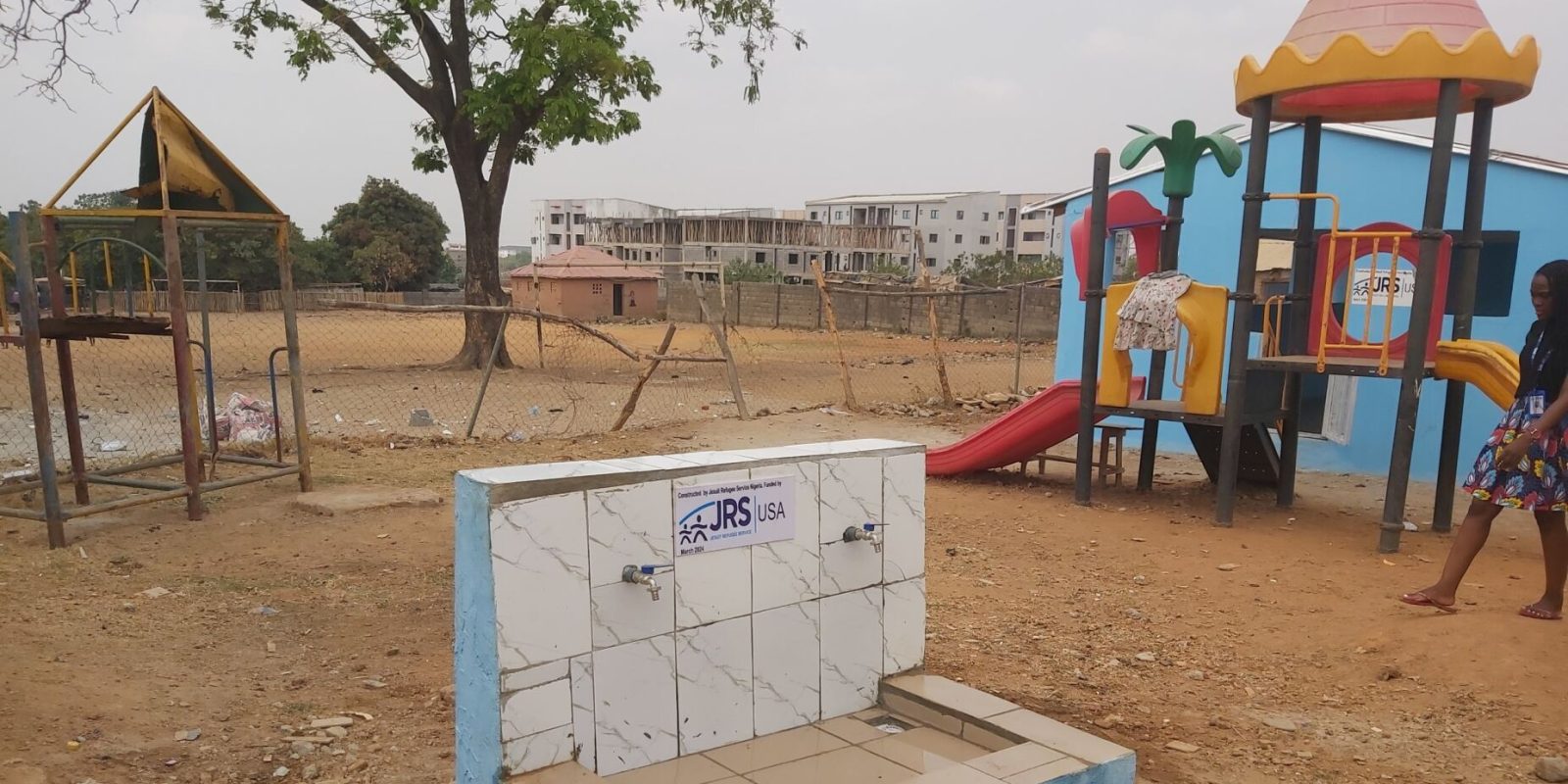Water and Climate Change: Farmers’ Adaptation Strategies in the West African Sahel
29 September 2021|Dr. Isaie Dougnon

As part of our commitment to accompany refugees displaced by climate and extreme weather around the world, join the JRS/USA #ClimatePush.
For the last 30 years, the availability of water has shaped the migratory process within the African continent. Native and migrant populations interact over water resources, the scarcity of which has also led to conflict, often between agricultural and pastoral populations. In Mali, where I have worked as a researcher for 25 years, water scarcity and desertification are transforming the social, economic, political and ecological landscape. The EU estimates that 2.5 million people have been displaced from their homes in Mali because of climate-related insecurity.
In collaboration with UNESCO, I most recently studied the relationship between migration and water in Mali. Mali is located in the Sahel, a semi-arid band of North Africa, and historically its peoples have migrated following rainfall and water availability. Given the movement of Sahelian populations, our Water and Migration Project is developing a constructive perspective, valuing local responses to climate change and water management. Giving value to cultural practices related to water and migration requires a particular attention to experiences, to knowledge and to conversations with women and men who live by and with water.
Water and migration in the Sahel: from oral tradition to facts
The link between water and migration is not new as we know from African oral traditions. As a historical source, oral tradition reminds us of the migration of several ethnic groups and the disappearance of ancient cities caused by climate disasters such as drought, famine and flooding, combined with other factors such as wars and external invasions.
Recent discussions on climate change in the Sahel distinguish between displacement caused by so-called ‘rapid onset events’ (for example famine, floods, locust, short rainfall) and migration taking place in the context of so-called ‘slow onset events’ (such as desertification, drought, land degradation or water scarcity).
These distinctions highlight the need to differentiate between different ways in which environmental factors can impact migration. In my research, migration is conceptualized as an active adaptation strategy. However, environmental change affects individuals and groups in different ways. Groups with existing social vulnerabilities are more likely to be affected by environmental changes.
In 1987, André Marty, an anthropologist and development worker working in Mali, identified five social categories who had been differently affected by droughts and famine in the Timbuktu Region.
These climate-affected social categories are:
- Malnourished people suffering from extreme food insecurity (fewer than other categories)
- Floating communities, without any property rights in their region (free and unfree)
- Impoverished un-stabilized communities (nomadic pastoralists)
- Impoverished relatively stabilized communities (sedentary communities with access to land, such as farmers)
- Less impoverished relatively stabilized communities (rural families with some wealth, access to land, and access to opportunities through connections to civil servants, remittances, and commerce)
Using these social categories, my research aimed to understand their different adaptation strategies according to each group’s ability to migrate internally, externally, regionally or not at all.
The result highlighted the cause and effect relations between the severe drought impacts on the livelihoods of these groups and their migratory models. My research shows that the migrants who take over small jobs in larger Malian towns are from the first group. They usually say, “We flee hunger.” Those who migrate for more than one-year to neighboring countries often belong to the third group. However, the seasonal migrants who move from one town to another within Mali or in neighboring countries belong to fourth and fifth groups. “Floating” communities are composed mainly of formerly enslaved persons, without land and livestock. This group also includes people who lost their farms as a result of land disputes. It is important to understand the differences between these groups, their differential access to resources, and their different practices of migration. These different outcomes demonstrate that the link between drought and migration also depends on social status, history, and access to land.
Water scarcity and policy responses
In the Sahel, particularly in Mali, policy responses to water scarcity often focused on preventing migration, stabilizing rural communities by developing irrigation programs and securing water resources. My recent research, however, has highlighted that these federal programs became drivers of migration when their cost grew too high for rural communities.
Four decades of development programs aimed at mitigating climate change effects have not decreased migration waves. On the contrary, the destinations have multiplied and the majority of candidates are young men and boys under age 20.
Of course, Sahelian farmers would welcome improved technology. But they need one which is adapted to their climatic, economic and social context. Irrigation programs developed by organizations like Development Aid and or the state-run Office du Niger rely on motor pump engines, consuming lots of gas, and requiring costly spare parts. Farmers’ dependence on imported technology in a landlocked country like Mali — especially in a remote area like the Northern region — is one of the main obstacles to mitigating the climate effects that would reduce population migration in and out of Mali.
For Office du Niger, located in the rain-rich south of Mali, the issue is not a lack of water. Indeed, there is an abundance of water — but it has become very expensive. Farmers complain about how much water costs and how difficult it is to access. Indeed, farmers even contest the idea that water is a commodity. I heard farmers wonder, “But how is it that the Office SELLS water, and I have to BUY water from the Office? Isn’t water given by God? How can anyone own it?”
The role of development and aid
In a region of protracted drought like the Sahel, migration and development aid have a complex relationship. The two adaptation mechanisms influence each other. New technology brought in by aid development may retain farmers on land in the short-term, but in the long-term, they can push people to migrate elsewhere. In a hostile climate zone, migration is a survival strategy for the most impoverished farmers and stock breeders. Policy responses should not be aimed at stopping migration, but to see migration as a way people overcome the high costs of irrigated farming. In essence, settling affected populations along irrigation channels doesn’t prevent them from migrating if water price remains high.
Yet, in the context of water scarcity, food insecurity and recurrent insurgencies, migration and development aid are not two contradictory possibilities as some external donors suggest. They have the possibility to be two complementary solutions. Combined, they would offer new prospects in new institutional environments. And their intelligent combination is all the more urgent in the context of regional crises such as armed conflicts and economic recession which causes many migrants to return home, and to seek water.
///
Isaie Dougnon’s research examines migration, work, and lifecycle in West Africa. Before coming to Fordham, Isaie was a professor of Anthropology at the University of Bamako in Mali where he taught courses on the anthropology of development, migration, and local knowledge. After publishing his first book, Travail de Blanc, Travail de Noir (Karthala 2007), Dr. Dougnon published several articles contributing to current debates on child labor. His work uses historical and anthropological approaches to offer a local perspective on labor and migration in colonial and post-colonial Africa.



